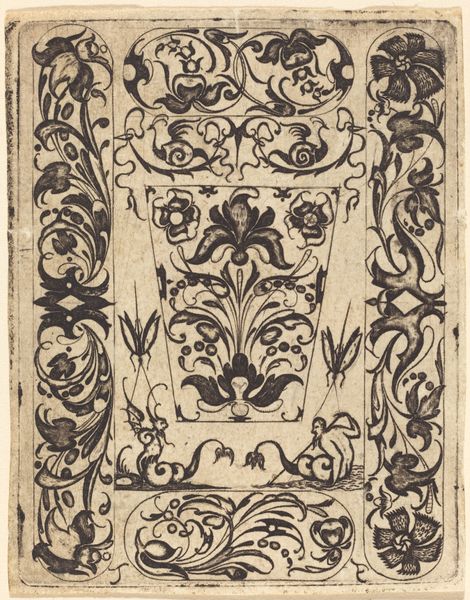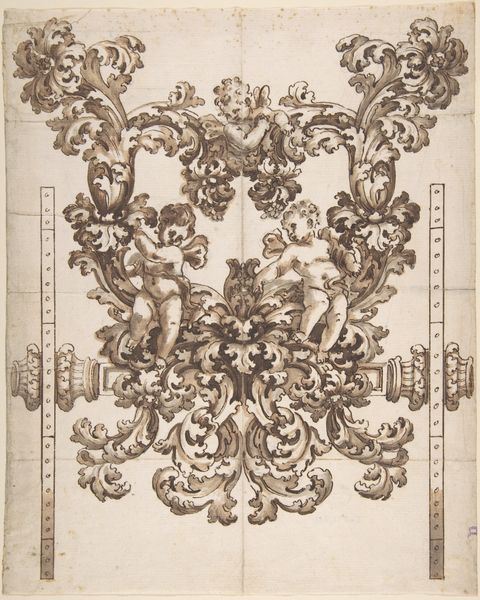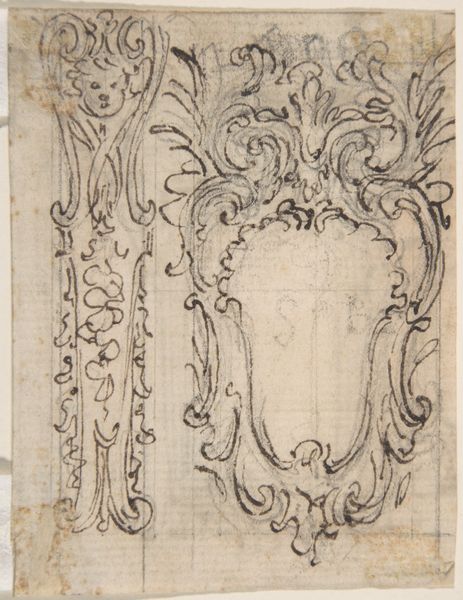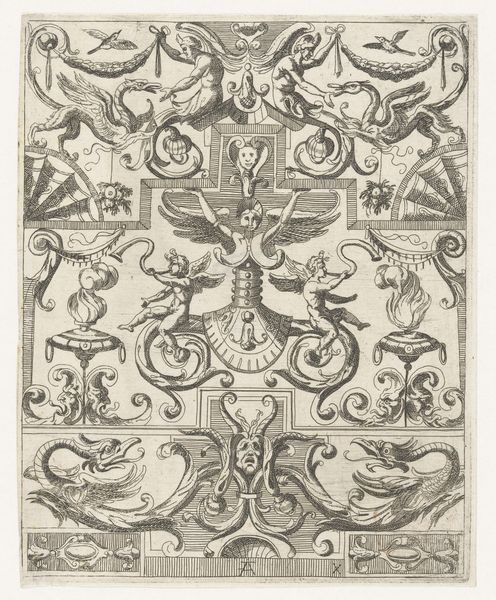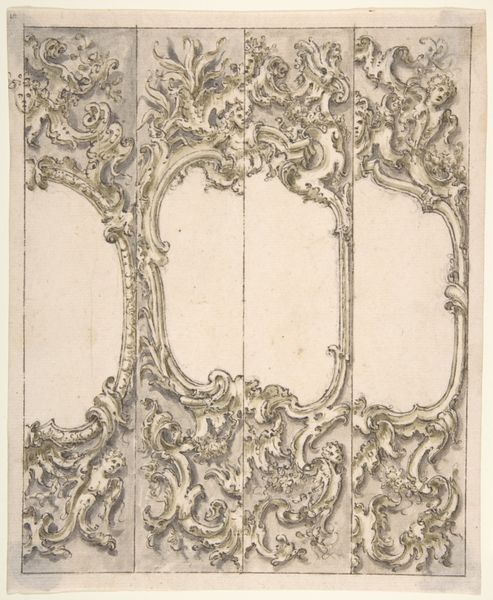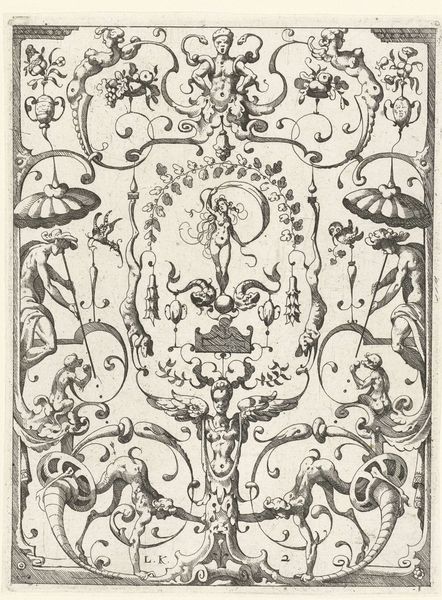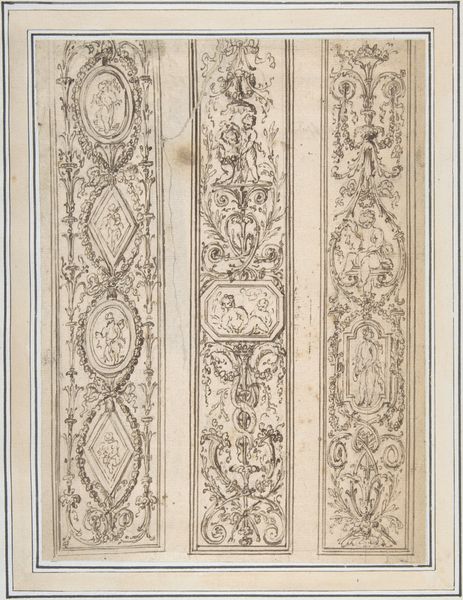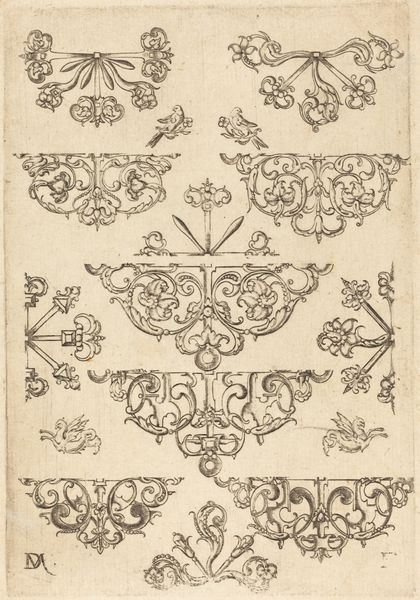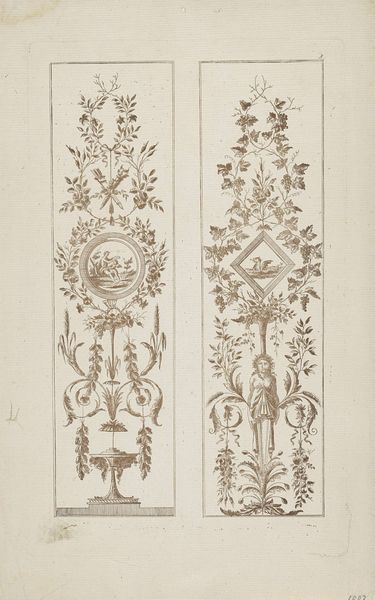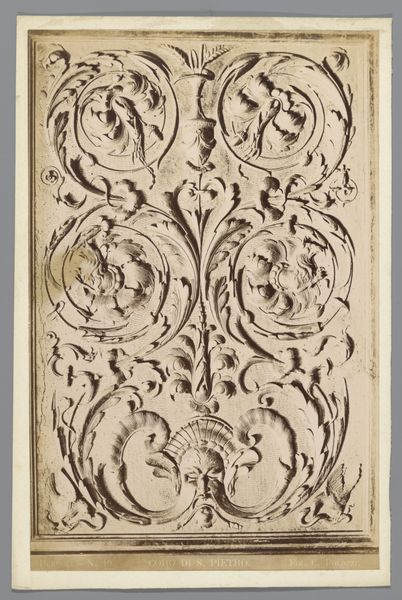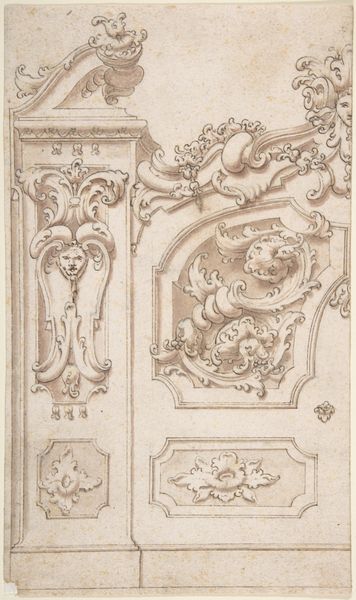
Two Designs for Wall Decorations on a Hatched Ground 1700 - 1800
0:00
0:00
drawing, ornament, print
#
drawing
#
ornament
#
toned paper
#
baroque
# print
#
geometric
#
line
#
decorative-art
Dimensions: 11-1/8 x 6 in
Copyright: Public Domain
Curator: Here we have "Two Designs for Wall Decorations on a Hatched Ground," dating from 1700 to 1800, of unknown origin. It's currently held in the collection of the Metropolitan Museum of Art. The piece appears to be a print, likely intended as an ornamental design. What are your initial thoughts? Editor: The density of the ornamentation, the sheer elaboration, almost makes it thrum. And that hatching gives it a sense of texture you want to reach out and feel, yet one knows it is simply ink on toned paper. What’s more intriguing is its anonymity. It makes one think about who was designing in these decorative styles during that time. Curator: Indeed. The anonymous nature certainly provokes thought. The designs themselves, built from geometric elements interwoven with floral and faunal motifs, present a formal language quite characteristic of Baroque ornamental art. Notice the use of symmetry, balanced by asymmetries in the details. Editor: I'm wondering, given the title mentions "wall decorations," was this print intended as instruction? Could this have been produced for consumption beyond court circles? The lines give the piece a certain reproducibility and this, in turn, could extend design knowledge outwards, through workshops, perhaps? Curator: That's a compelling perspective. Examining the composition further, note the verticality and the suggestion of layering. Each design element builds upon the other, creating a harmonious whole. There is no central point, yet our eyes are drawn upward, following the rhythm of curves and counter-curves. Editor: These curves are also telling! When you analyze the physical act of carving such intricate patterns it must have taken tremendous hand-eye coordination. What does that speak to regarding specialized training or apprenticeship and workshop practice? Curator: That focus on the physical making does reveal hidden histories within decorative arts that deserve more recognition! Well, as we draw to a close on our discussion of this rather interesting drawing, what final observations do you have about it? Editor: Simply put, I think such works call us to value design in a deeper, more connected way. Design involves both conception and construction. Curator: A crucial insight into unlocking an even greater understanding and respect for artistic traditions and beyond.
Comments
No comments
Be the first to comment and join the conversation on the ultimate creative platform.
